 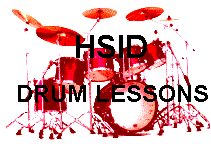

Lesson Menu #2
Intermediate & Advanced.
Lesson Menu #3
Advanced & Ultra-Advanced.
Lesson Menu #4
Text lessons: All levels.

PRODUCTS:

GET ALL THE PRODUCTS AT ONE LOW PRICE.

SURPRISES ABOUND . . . For those with a bit of generosity
in their soul.
CLICK HERE , to see what I mean.

Intermediate & Advanced
Drummers
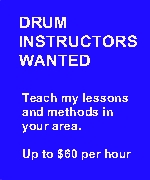 Your future is waiting.
Your future is waiting.

ALL MUSICIANS
MASTER
ALL RHYTHM,
This FASCINATING WAY!
 Discover the 'LOST KEY' for Unraveling
ALL the mysteries of rhythm, and musical time.
Discover the 'LOST KEY' for Unraveling
ALL the mysteries of rhythm, and musical time.
This work
is the crowning-achievement of my 50 year career, and it's
my proudest accomplishment.
It contains the potential to help YOU change the face of modern music!
You'll love it! CLICK HERE to check it
out completely! You're in for a MAJOR surprise!
 "PRE-SCHOOL DRUMMER?
"PRE-SCHOOL DRUMMER?
YES!"
Can we teach rhythm
to pre-schoolers? YES!

This is a very short course,
designed to help adults plant the seeds of rhythm
into children of nearly any age.
CLICK HERE
 FREE ELECTRONIC BOOK BONUS (also included)
FREE ELECTRONIC BOOK BONUS (also included)
 BUSINESS OPPORTUNITY:
BUSINESS OPPORTUNITY:
MAKE BIG MONEY SELLING USED DRUMSETS!
* INSIDER HARDBALL-BUYING-TIPS AND SECRETS.
* UNIQUE RECOVERING SECRETS

Support this site and and gain an advetising bargain with the deal.
 Place a permanent ad here. Place a permanent ad here.

GET ALL THE PRODUCTS AT ONE LOW PRICE.

SURPRISES ABOUND . . . For those with a bit of generosity
in their soul.
CLICK HERE , to see what I mean.

|
|
Downloads *
Drummers Trivia *
Drummers Chat Rooms *
Rudiments *
Digital Music *
Knowledge Assessments *
TD Archives *
Drum Set Buyers Guide *
Bass-Player Jokes *
Assembling a Drum Set *
Parts of a Drum Set *
About HSID *
Video Troubleshooter
Bill Powelson's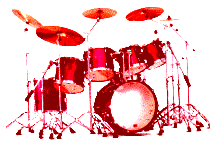 School of Drums
School of Drums
Snare/Bass (Quad Chart)

NOTE: This lesson may not make sense unless you
fully understood the preceding lesson.
CODE:
- Snare = S
- Bass = B
- Snare or Bass = S/B
- Inversion = INV
- Cymbal = C
Note: When writing rhythms, stick with the coding. Do not place "B" type patterns on the snare line or "S" type patterns on the bass line. This will reverse the downbeat/upbeat flow of the music. Inversions (Inv.) Can be utilized but they often confuse the flow. "B/S" type patterns may be used on either line.
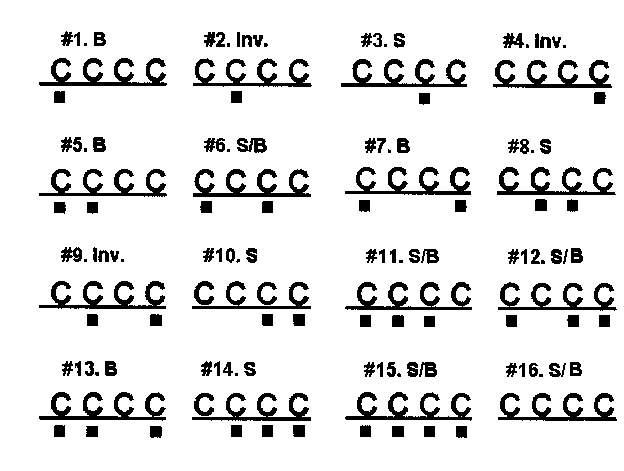 Using the Chart to Create
Half Measure Rock Beats
Now let's use the above chart to create a familiar beat. You will be playing four repetitious notes on the cymbal. Next, choose pattern#3 for the snare line and pattern#1 for the bass line. Do you recognize this beat? It is basic rock with a new name. By the chart we would call it S3/B1.
Constructing S3/B1 (basic rock)
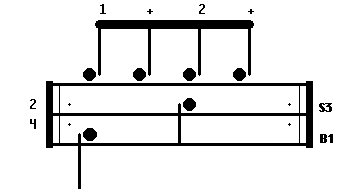
Are you beginning to see how the chart can help you to discover Billions of new rhythms? Grab some scratch paper then write and play a few patterns of your own. Eighth 2/4 contains a total of 256 possible variations.
HINTS: Some of these beats can be very difficult to play.
- 1. Play all sixteen bass patterns against S3 on the snare as an early project.
- 2. Then play all sixteen as snare figures against S1 on the bass.
- 3. Avoid a mixture like S12/B13, they are guaranteed to drive you insane.
Awareness should be your main goal. There is not enough time remaining in your life to play every beat that we are about to discover. If you understand how the chart works then you are probably ready to move on.
Let's investigate some possibilities with 8th "rock" 4/4.
Notice: I often omit 'rests' from the music notation samples as they have a tendency to confuse the newer students. I'm trying to keep everything as simple as possible.

locate these numbers on the chart. On the snare line you see numbers 3 and 10 while on the bass we have numbers 1 and 5. The whole concept should have hit you like a ton of bricks by now. If it hasn't then go back and study it again.
In eighth 'rock' 4/4 you will discover 65,536, single measure beat possibilities and nearly 4.3 billion, two measure patterns. Also, no rule says you must stop with two measure variations though most commercial music seems to be limited to that.
Food for thought:
With permutations in mind you should now return to the 'Primary Dance Beats' lesson, scan over the various beats and think, think, think. You will be flooded with awareness. This same general permutation theory will apply to any form of any time signature, including the primary dance beats. The Blues' beat will use a chart based on three or a 'Tri' chart. The shuffle beat is based on the same 'Tri' chart as well and then there is the Waltz beat.
 Copyright Bill Powelson 1994 all rights reserved.
Copyright Bill Powelson 1994 all rights reserved.
| |



